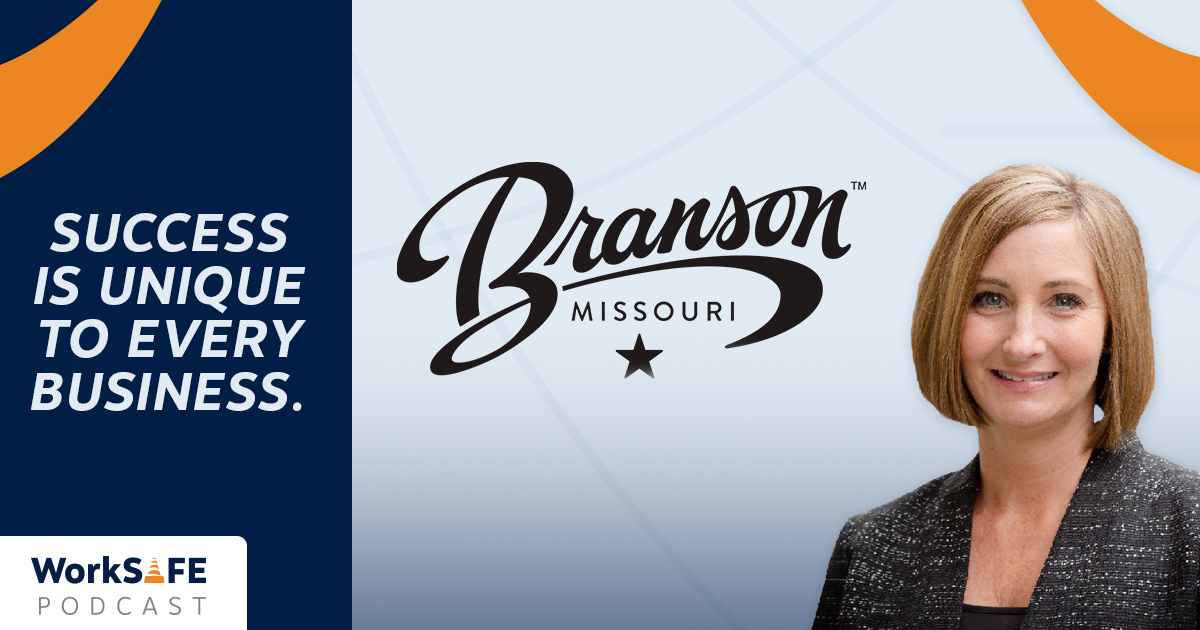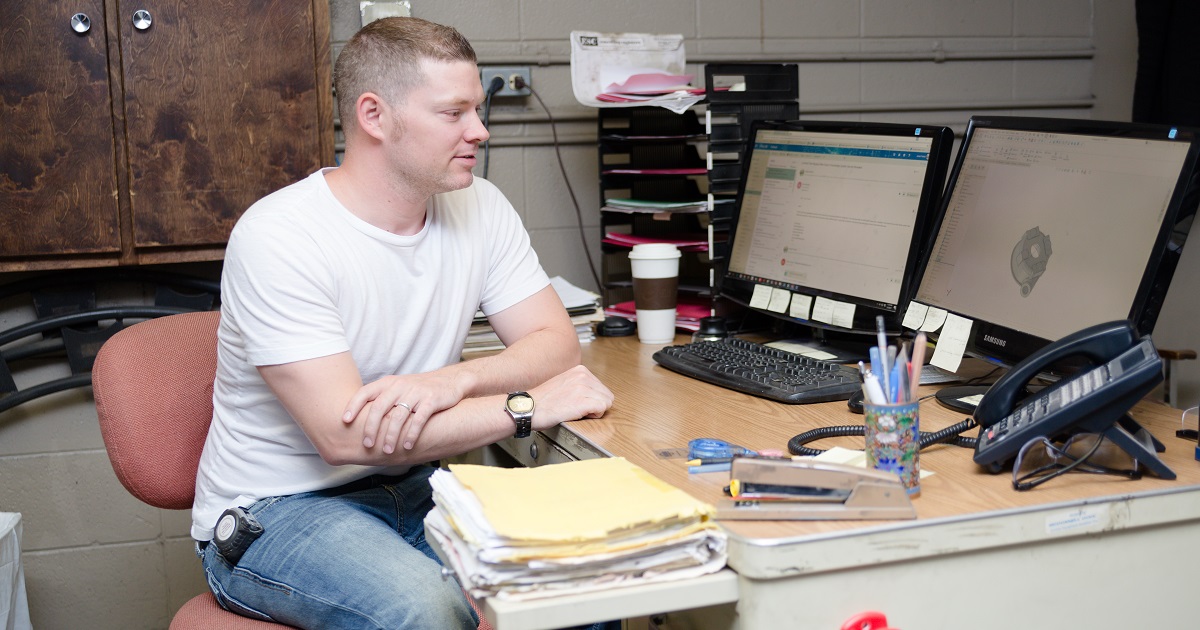Known for its country music, live shows and outdoor activities, the city of Branson, Missouri is a family favorite. Travelers can reach it easily by car or low-cost flight. With everything from amusement parks to museums, the lakeside locale has something for everyone. However, the city is much more than a vacation destination. Over 10,000 residents live there year-round. It takes a team to maintain a full-time community: maintenance workers, administrators, police and first responders. And it takes a risk management professional to keep the team safe.
On this episode of the WorkSAFE Podcast, we sit down with Bob Smither. He is the Risk Manager for the City of Branson. Smither has been in the role for six years and oversees all safety programs for employees, provides risk mitigation direction to leadership and facilitates work comp claims.
First, we’ll share how Smither came to be Risk Manager. Then, we’ll talk about key things he did to help the city transition to a safety culture. Finally, we’ll discuss ways he actively promotes safety and risk management.
Listen to this episode on the WorkSAFE Podcast, or read the show notes below.
Making moves: From musician to risk manager
Smither didn’t start his career with the goal of being a safety professional. In fact, he began his journey as musician. He performed as a professional trumpet player at West Point, the United States Military Academy located in New York, for fourteen years. During his final six years with the active duty band, he served as Safety Officer. He received safety training, and made sure band members and staff abided by safety rules.
When it was time to make a career change, Smither brought his safety experience with him. Branson opened the door to him. They were searching for a Risk Management Coordinator – someone to focus on reducing incidents and hazards around the city. “They needed somebody that could come in make an assessment of where we are and be able to communicate – to management, to employees, to director positions – on some things, and changes that might need to take place to make us a safer workplace,” Smither explained. “So, bingo they hired me.” He started working with a safety officer, observing employees and training. When the safety officer moved on, he took over both positions.
Risk management: From safety rules to safety culture
When Smither settled in his risk management role in Branson, most departments had their own safety rules and routines. However, rules are just one part of building a safety culture. Employees need to buy in to safety on the job as a team. Fewer incidents raises their morale and improves their quality of life. Further, it lets them know leadership values their health and safety. This trust and commitment doesn’t happen overnight. And Smither knew he needed to build it.
First, he introduced himself as a partner. Changes can’t be made without the help of employees. Then, he started talking about safety culture. “We just kind of talked about what it was,” he explained. “And then I gave them all a vision of where we could be, and what a high level of safety culture looks like. That is our goal. Let’s start with that.”
Earning the trust of employees
In order to make changes, Smither needed to earn the trust of employees. Employees often view risk managers as “the bad guys” – always watching for safety violations. But risk management is so much more than that.
One of Smither’s first stops was the local police department. Policy and processes drove the force. Bringing them on board meant interacting, training and talking with them. For example, Smither implemented “after action” reviews. One day, an on-duty police officer got into an accident. He had been watching for speeding cars, and pulled in front of another vehicle while tracking one down. Smither sat down to talk with the officer and his supervisor. But the conversation didn’t go as they expected.
“I’m not here to tell you what you should have probably done different,” Smither explained. “I’m not here to blame anybody for anything. I just want to find out what the facts are, and where we we as an employer failed you.” The approach was a new one. “I started getting this sense where like, okay, I’m building the trust,” he added. “They trusted me because I followed through with what I said. That’s probably the most important thing.” After a few months, he began to earn the trust of the department.
Understanding the risks
Branson is a municipality. As a result, Smither finds they have the time to learn to do things safely. It’s important for employees to understand the reasons why incidents happen. Then, they have to be provided with training. Smither points to four main reasons for incidents. The first, and most common, is being in a hurry. That’s followed by being tired, complacent and frustrated. The common factor in all of these is distraction. He encourages employees not to cut corners. “There’s no reason to take shortcuts, because they always turn into long cuts,” he teaches.
Sharing the data
Smither is always researching and studying. He looks at claim history and past incidents. Which ones are the most common? How often do they happen? Where were the highest costs incurred? Not only does the data influence training efforts, but it’s also shared with leadership. Showing this information helps earn leadership buy-in.
Putting risk management into action in Branson
Safety is a team effort. It takes partnership between leaders, supervisors and employees. Smither empowers employees in every branch of the Branson team. His efforts include:
- Training supervisors on their specific role. Leaders should praise employees when they work safely. This way, they don’t see safety conversations as negative.
- Forming a safety committee. The team is made up of members from the entire organization, including those outside of physical labor roles. They perform monthly safety tasks together. For instance, they check fire extinguishers once a month.
- Creating safe spaces. Safety meetings are a place where employees can talk openly about their concerns. Their feedback is key to making real changes. For example, employees recommended placing a blockade in front of a customer service window. Residents could walk up and pay utility bills with employees behind the glass – and cars presented a risk to both. Concern led to implemented changes.
- Put a near miss program in place. A lot of safety data is lagging. It’s formed by incidents that have already happened. But near misses are often warning flags of incidents to come. Smither put a plan in place so Branson employees can report close calls.
- Show improvements. Branson has an employee newsletter. Smither has a dedicated safety page. Here he highlights safety improvements with a write-up and photos to demonstrate how changes are being made.
Working to reduce risk together
Together, the Branson team makes strides in safety together. “Number one is go out there and have safety conversations with people,” he said. “Really treat them as an equal when it comes to safety and let them know that you need their help, and that you’re partnering with them to do what we do safer.” Smither leads the charge, but the key to his success is a firm partnership with employees and leaders. He offers a piece of advice to other safety professionals: “The biggest thing is just let them know that you are there to help, not to hurt.”
For free safety posters, sample policies, and safety toolkits, visit our Resource Library. Then, check out this WorkSAFE Podcast episode on getting leaders to invest in safety culture.

